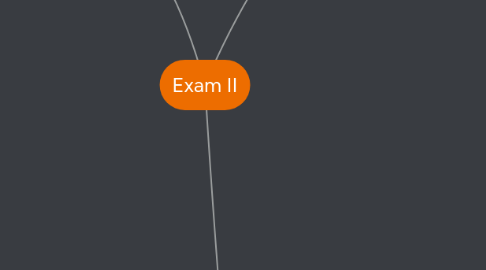
1. Physiology
1.1. Muscles
1.1.1. Contraction
1.1.1.1. Sliding filament theory
1.1.1.1.1. Sarcomere
1.1.1.2. Contraction types
1.1.1.2.1. Concentric
1.1.1.2.2. Eccentric
1.1.1.2.3. Isometric
1.1.1.2.4. Isotonic
1.1.1.2.5. Isokinetic
1.1.2. Fibre types
1.1.2.1. I
1.1.2.1.1. Slow
1.1.2.2. II
1.1.2.2.1. Fast
1.1.2.2.2. IIa
1.1.2.2.3. IIx
1.1.2.2.4. IIb
1.1.3. Golgi tendons
1.1.4. Stretch reflex
1.1.5. Ligaments
1.1.5.1. Bone-bone
1.1.6. Tendons
1.1.6.1. Muscle-bone
1.1.7. Flexibility
1.1.7.1. Stretches
1.1.7.1.1. Static
1.1.7.1.2. Dynamic
1.1.7.1.3. Ballistic
1.1.7.1.4. Proprioceptive Neuromuscular Facilitation (PNF)
1.2. Bones
1.3. Anatomical composition
1.3.1. Somatotypes
1.4. Energy systems
1.4.1. Phosphocreatine
1.4.2. Anaerobic glygolytic
1.4.2.1. Lactic acid system
1.4.3. Aerobic
1.4.4. Relative efficiency
1.4.5. Suitability for different sports and events
1.5. Cardio-vascular system
1.5.1. Blood
1.5.1.1. Stroke volume
1.5.1.2. Heart rate
1.5.1.3. Blood pressure
1.5.1.3.1. Systolic
1.5.1.3.2. Diastolic
1.5.1.4. Cardiac output
1.5.2. Oxygen
1.5.2.1. Gaseous exchange
1.5.2.2. VO2 Max
1.5.2.2.1. Field testing
1.5.2.3. O2 Deficit & Debt
1.5.2.4. Exercise Post Oxygen Consumption (EPOC)
1.6. Nutrition
1.6.1. Carbohydrates
1.6.2. Proten
1.6.3. Fat
1.6.4. Eating before and after training
1.6.5. Blood glucose levels
1.7. Training principles
1.7.1. Interval
1.7.2. Continuous
1.7.2.1. Target zone
1.7.3. Fartlek
1.7.4. Altitude
1.7.5. Plyometrics
1.7.6. Pyramid system
1.7.7. Oxford technique
2. Biomechanics
2.1. Technique analysis
2.1.1. Principles
2.1.2. Methods
2.2. Movement patterns
2.3. Planes of rotation
2.3.1. Sagittal
2.3.1.1. Line from front to back
2.3.1.1.1. Splits body into left and right
2.3.2. Frontal
2.3.2.1. Line side to side
2.3.2.1.1. Splits into front and back
2.3.3. Transverse
2.3.3.1. through the middle
2.3.3.1.1. Splits into top and bottom
2.4. Laws
2.4.1. Newton's Laws
2.4.1.1. 1.
2.4.1.1.1. An object in motion stays in motion unless acted upon by external force
2.4.1.2. 2.
2.4.1.2.1. Acceleration of a body is parallel and directly proportionate to Force applied, but inversely proportionate to mass.
2.4.1.3. 3.
2.4.1.3.1. The Forces of action and reaction are equal, opposite and collinear.
2.4.2. Gravity
2.5. Centre of mass
2.6. Fluid forces
2.6.1. Drag
2.6.1.1. Reducing drag
2.6.1.1.1. Sprinters
2.6.1.1.2. Swimmers
2.6.1.1.3. Cyclists
2.6.1.1.4. Racing cars
2.7. Vectors
2.7.1. Length + direction
2.7.1.1. Displacement
2.8. Scalar
2.8.1. Has a length only
2.8.1.1. Distance
2.9. Components
2.9.1. Acceleration
2.9.2. Speed
2.9.3. Velocity
2.9.4. Mass
2.9.5. Force
2.9.6. Distance
2.9.7. Displacement
3. Psychology
3.1. Personality
3.1.1. Response
3.1.1.1. Emotional
3.1.1.2. Attitudinal
3.1.1.3. Behavioural
3.1.2. Theories
3.1.2.1. Psychoanalytic
3.1.2.1.1. Freud
3.1.2.2. Interactionist theories
3.1.2.3. Trait theories
3.1.2.3.1. Eysenck’s (1955)
3.1.2.4. Humanistic
3.1.2.5. Social learning theories
3.1.2.5.1. Albert Bandura (1977)
3.2. Group and team
3.2.1. Optimisation
3.2.2. Cohesiveness
3.2.3. Social loafing
3.2.4. Social facilitation
3.2.5. Leadership
3.2.5.1. Charactaristics
3.2.5.1.1. Learned
3.2.5.1.2. Inate
3.2.5.2. Types
3.2.5.2.1. Kurt Lewin (1939)
3.2.5.3. Fred Fiedler (1964)
3.2.5.3.1. Contingency theory
3.3. Motivation
3.3.1. Intrinsic
3.3.1.1. Internal motivation
3.3.1.1.1. Wanting to improve
3.3.1.1.2. Winning for its own sake
3.3.2. Extrinsic
3.3.2.1. External motivation
3.3.2.1.1. To impress people
3.3.2.1.2. Money
3.3.3. Clark Hull (1943)
3.3.3.1. Drive theory
3.3.3.2. Drive reduction theory
3.3.4. Robert Yerkes & John Dodson (1908)
3.3.4.1. Inverted 'U' theory
3.3.5. Rene Thom (1968-1972)
3.3.5.1. Catastrophe theory
3.3.6. Abraham Maslow
3.3.6.1. Hierarchy of needs
3.3.7. David McClelland
3.3.7.1. Achievement motivation theory
3.4. Attribution
3.4.1. Self efficacy
3.4.2. Weiner
3.4.2.1. Attribution theory
3.4.3. Learner helplessness
3.4.4. Self serving bias
3.4.5. Attributional retraining
3.5. Anxiety
3.6. Stress
3.6.1. Eustress
3.6.1.1. Good
3.6.2. Distress
3.6.2.1. Bad
